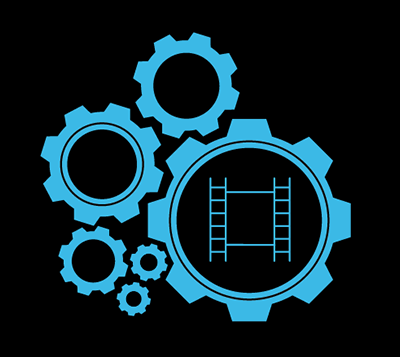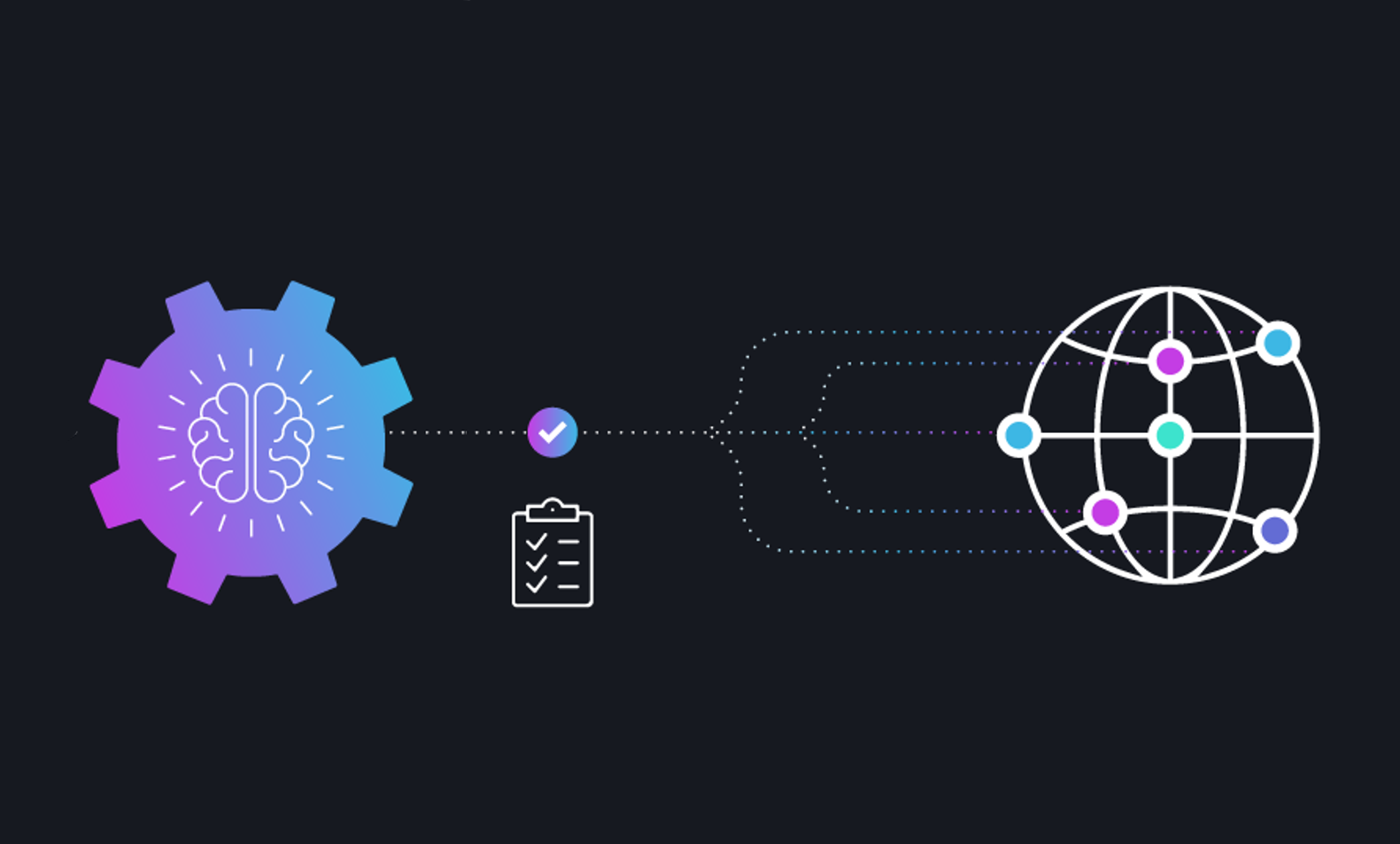While the content produced and distributed by media companies originates from a highly creative process, there is a surprising amount of repetitive preparatory work that must be done to that content to make it available wherever and whenever consumers want to consume it. From the time a show is delivered to the content owner to the time it is pushed to distribution platforms, any number of QC checks, transcodes, translations, captions, audio levels, and other processes are necessary to create the various content packages required. And while these various processes may not be creative steps (in the classical sense of creativity), they are still highly sophisticated steps that typically require significant specialized capabilities.

In many ways, media companies operate much like a factory, with raw materials (a show master) coming in and finished goods (distribution packages) going out.Thousands upon thousands of shows pass through the “assembly line” of a media factory, getting transformed, validated, and converted as necessary along the way. This assembly line is the essence of today’s media supply chain, and the desire to make content preparation more efficient and responsive is what media supply chain optimization is all about.
But how do you optimize a supply chain that requires such sophisticated, specialized media processing? The answer lies in automation and intelligent orchestration, using advanced, high-performance software tools to handle a majority of the content preparation tasks in a media supply chain. With advanced software applications now capable of performing much of the work required, formerly manual repetitive tasks can be automated, accelerated, and scaled to meet any level of demand. The result is a media supply chain that delivers increased efficiency, agility, and intelligence to help differentiate your business from the competition. Let’s take a closer look …
Automation in the Fundamental Sense
In the first and most basic meaning, automation refers to the actual function performed programmatically or systematically by a piece of software running on a machine, without human input. One example might be the process of transcoding a piece of media from one format to another. As processing horsepower has exponentially increased, this has in turn fueled advanced software capabilities never before possible, resulting in more and more of the work in a media supply chain moving to automated functions. Today, it’s not uncommon to see per-title encoding, audio leveling, closed caption replacement, language track placement, and many other sophisticated media processing actions being performed in servers running software applications.
The beauty of automated tasks like these is that they are perfect for moving to the cloud. With access to an unlimited number of machines, you can spin up an unlimited number of instances to perform an unlimited number of automated software functions. The more tasks you execute as software functions in the cloud, the more you set yourself up to automate those tasks, and the more content you can deliver with the existing team you have. You gain important agility to respond to new opportunities because your factory is now capable of reacting and scaling instantly. You also gain insights into how much time and cost goes into every single function, giving you new intelligence about your media operations and helping identify bottlenecks or cost saving opportunities.
Adding Value: Intelligent Orchestration
The second aspect of automation has to do with being able to trigger each of the functions that must be performed throughout the media supply chain. This is where having a platform making decisions to orchestrate the automated processing is critical. The key lies in having sufficient intelligence at the platform level to “understand” the events that just happened and the events that need to happen next — and which tasks to trigger to move the workflow forward along that particular path. Upon receiving a file, for example, the platform might determine that the necessary course of action is to run the file through a transcoder to normalize it to a particular format. With intelligence about the file and the target format, as well as its own decision engine, the platform can orchestrate next-step actions.
When you automate decision-making at the platform level, you add another level of value. In the Rally platform, this happens through the Rally Decision Engine. It doesn’t get a lot of attention compared to other parts of the platform, but it’s core to the way in which Rally can automate entire supply chains, not just functions. And that ability to automate multistep processes is a big distinction. Why? Because when you can tie together multiple software functions and trigger them in an orderly, automated fashion, without humans making decisions around what to do next, you gain tremendous efficiency — and therefore value — across your media supply chain.
So, in the ideal world, a piece of content comes in and it’s recognized, analyzed, transcoded, QC’d, formatted, packaged, and sent on to its distribution platforms. The process is highly automated, in that no human intervention is needed, and it typically happens at scale. (For context, in 2022, 192 million decisions were automated by the Rally platform.) But what happens when there is an exception, or not every step goes as expected?
Optimizing Manual Intervention
When it comes to optimization, the real question is this: Can you build your supply chain platform so that it’s smart enough to figure out what happens when there’s an exception that needs to be addressed by a manual operator?
Yes, you can, by applying a third level of automation that integrates manual operations only when required. In this case, your media supply chain platform takes the output of a process, analyzes it, and then makes another decision: Does this require human involvement or not? If the answer is yes, the platform not only triggers that engagement, but also provides additional information to help the operator get the task done quickly.
With a platform such as Rally, this type of workorder management allows for optimization not just across the many repetitive tasks, as well as the inevitable exceptions, but also the critical creative tasks involved in preparing content for global distribution. (You’ll be able to read more about the power of workorder management in an upcoming blog post.)
Provisioning Exactly What’s Needed
The beauty of running media supply chains in the cloud is that you have access to all the infrastructure you could ever need, all managed by someone else. It’s always available, ready and waiting to be called into action. Here is where we see a fourth level of automation that delivers real business value: the automatic deployment of the applications and the provisioning of infrastructure needed to run them on demand. Your media supply chain platform should not only automate software functions and manage the decisions that enable further automation; it should also know which tool is the right tool for every job, know what infrastructure is needed to run that tool, spin up those resources to complete the job, and spin down those resources when the job is complete.
Rather than rely on one of your engineers to provision more cloud resources to run more jobs, you simply rely on the platform to scale your infrastructure. You already have the elasticity, and the platform gives you the agility to take advantage of it. If a new job comes into your media factory, the platform enables you to scale your capacity instantly.
Improving With Every Job
Through all these aspects of automation, you gain efficiency and you improve your agility. And because the platform captures data about all these automated tasks and processes, you also gain intelligence about your media factory — metrics you can use to make better business decisions.
What does all of this mean for your business and the work you do today?
If you’re working to deliver more content to more destinations more quickly to satisfy various distribution deals, automation of specialized media processing steps can bring an essential productivity to your operations. The more you can automate the preparation of content for delivery, the less friction there will be as content is packaged. This is not necessarily about doing more with less, but about being able to deliver more content (and value) with the team you already have.
Your media factory will be able to handle a higher volume of content at a higher pace, with processing resources scaling up or down according to need. Your staff will have the time and supporting information they need to focus on aspects of the process that truly require a creative or human touch. Intelligent automation will make your operations more productive and more scalable than you thought possible!
Find out how we can help you automate your media factory and package more content more efficiently while giving you more agility and intelligence. Click here to set up a meeting.


